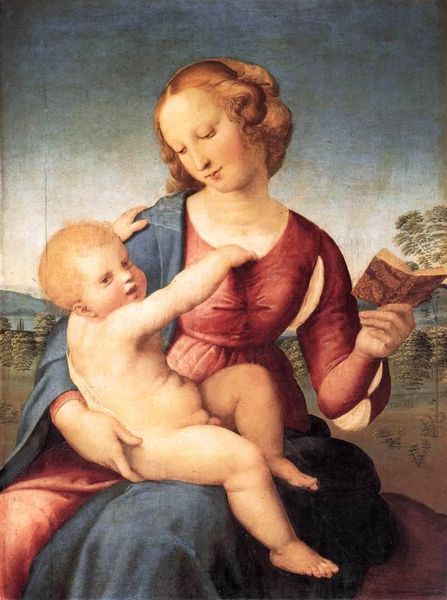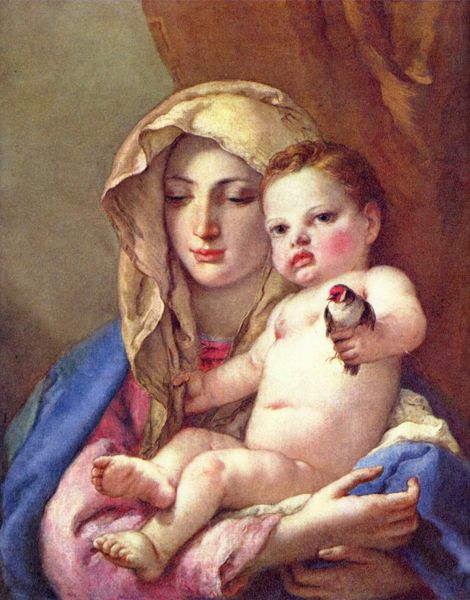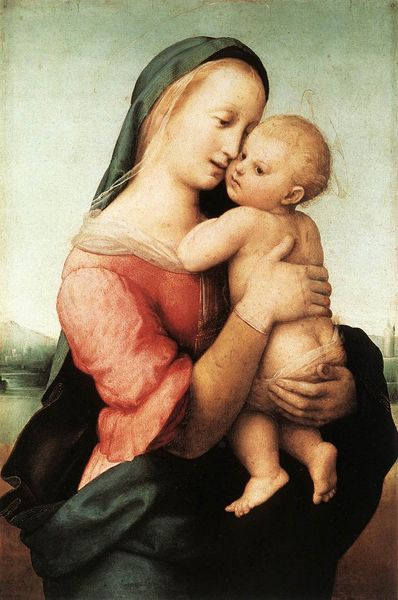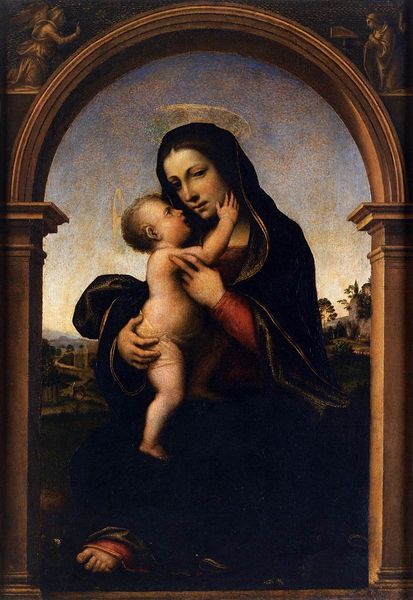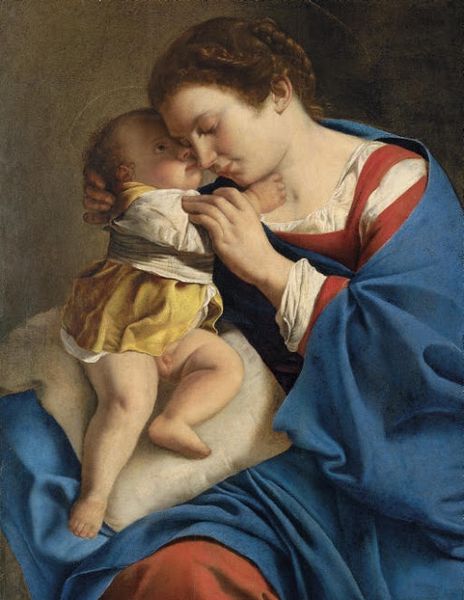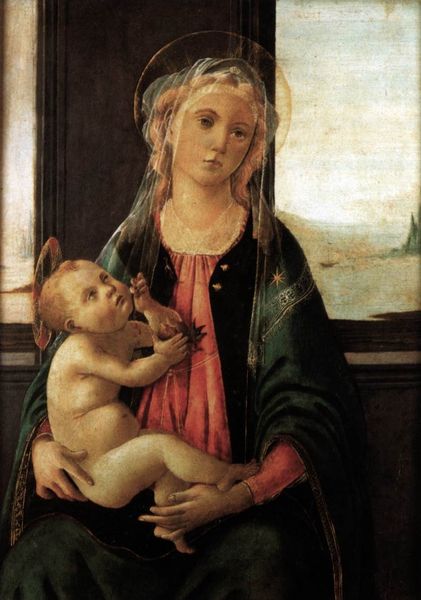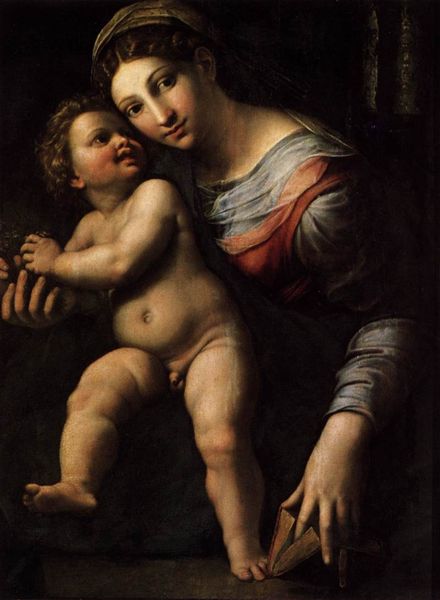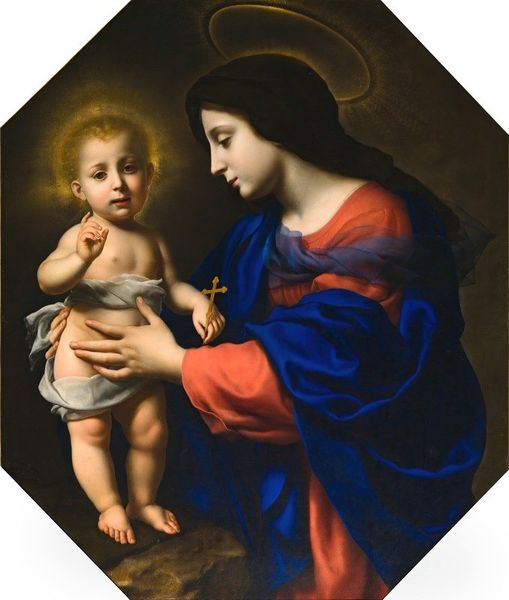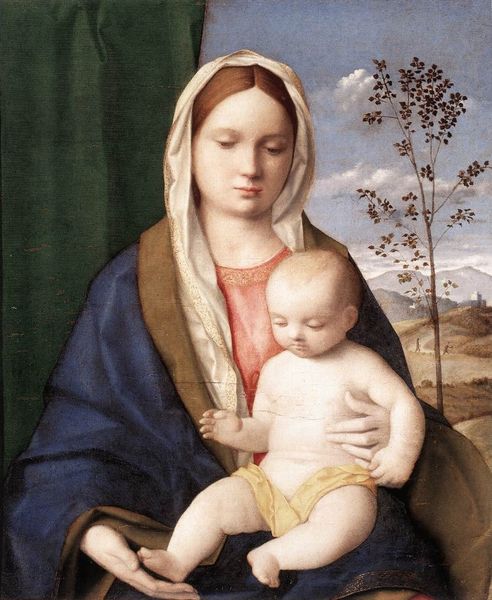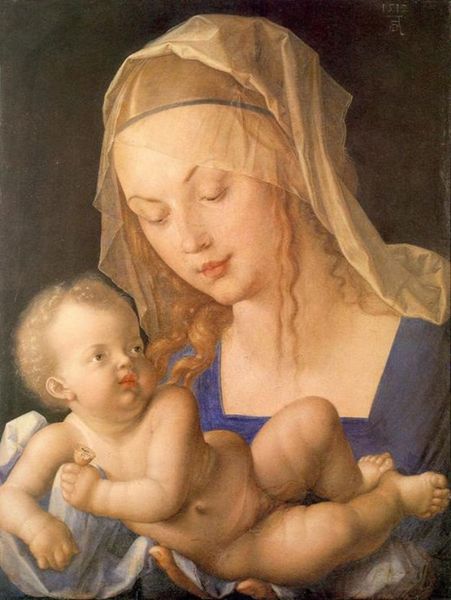
painting, oil-paint
#
portrait
#
baroque
#
portrait
#
painting
#
oil-paint
#
figuration
#
child
#
history-painting
Copyright: Public domain
Curator: Pompeo Batoni painted this "Madonna and Child" in 1742, here in the Borghese Gallery. The painting really captures a sense of intimacy between mother and child. What are your initial thoughts on the piece? Editor: Well, right away, the opulence of the draped fabric contrasts sharply with the soft, fleshy forms of the figures. I'm also curious about the handling of oil paint—you can almost feel the weight and texture of that drapery. Curator: Exactly. Think about what a representation of motherhood meant in the 18th century and Batoni's choice to soften the image of divinity. It speaks volumes about gender roles and idealised femininity at that moment in history. How do the materials of painting themselves relate to social class and gender, considering who would have been buying this? Editor: It is fascinating to consider. The ultramarine, obviously, was hugely expensive; reserved for this sort of subject matter and the upper classes. You're also paying for a virtuoso performance: observe how Batoni captures the texture of skin, contrasting that with heavy fabric. What did that signify in terms of labour? Batoni himself was crafting his own social position, really. Curator: Absolutely! The very act of depicting the Madonna in this tender way contributes to a larger dialogue about women's roles, even divinity. Her gaze is not heavenward, but down to the child. Do you think this maternal image challenges traditional power structures? Editor: Potentially. But isn't the tenderness a kind of labor in itself? This idealization obscures, or mystifies, all the actual work that goes into childbirth and childcare. So perhaps it doesn't radically alter anything after all. Look at how carefully constructed her hands are—her physical sacrifice smoothed out by soft light. Curator: It’s interesting how your materialist lens shows me new insights into these established themes, teasing out what has been obfuscated from centuries of viewership! Thank you, it allows me to consider Batoni’s aims from a very different angle. Editor: Thanks to your awareness, I've reevaluated my own thinking about production and social change in a really constructive manner.
Comments
No comments
Be the first to comment and join the conversation on the ultimate creative platform.
